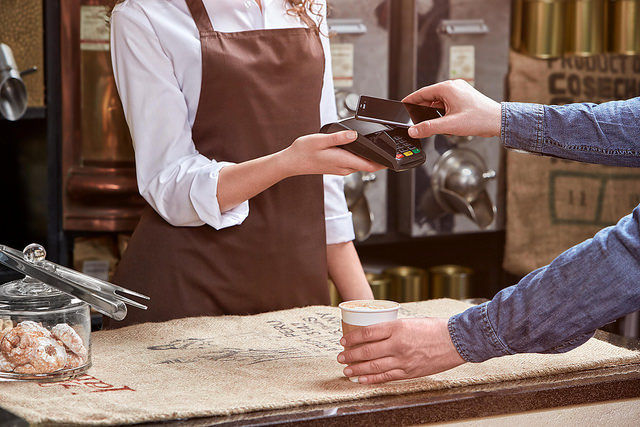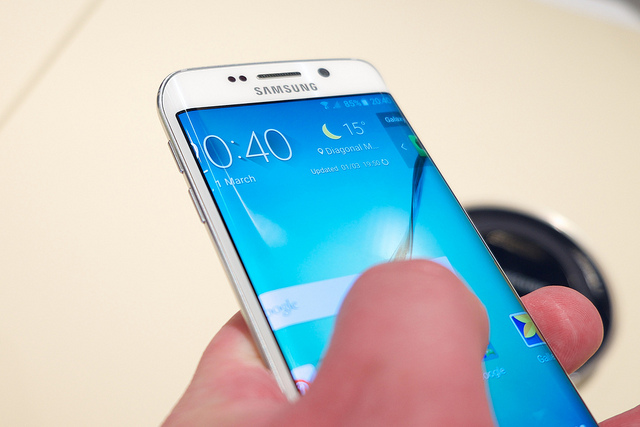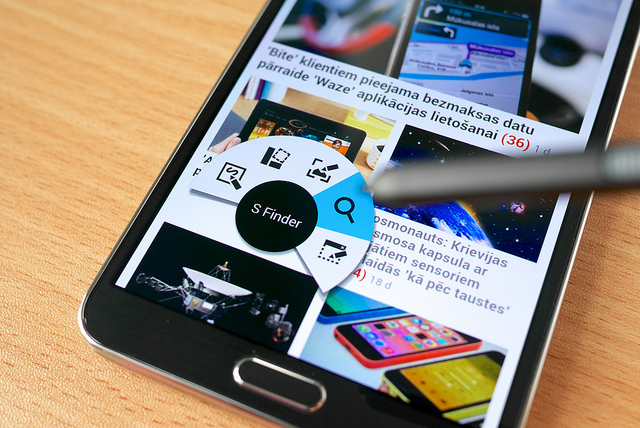While mobile wallet growth has been slow, they are destined to be a big part of the mobile landscape moving forward.
In a recent report from Forrester, they forecast that 15-20% of smart phone owners will be using mobile wallets by 2018.
In many ways this growth is driven by the technology behind mobile wallets and growth within the industry as various players are settling on standards like NFC.
 One of the driving factors by many customers switching to using Apple Pay has been the security issues at Target and other retailers. Apple Pay does not save the transaction information and doesn’t require customers to show their credit card when making a purchase. Accepting mobile payments can help build shopper confidence.
One of the driving factors by many customers switching to using Apple Pay has been the security issues at Target and other retailers. Apple Pay does not save the transaction information and doesn’t require customers to show their credit card when making a purchase. Accepting mobile payments can help build shopper confidence.
The release of Apple Pay has pushed mobile wallet growth. Major credit card companies support Apple Pay and it has been adopted by major brands such as Whole Foods (who reports reports $4 million in weekly sales using Apple Pay). Seeing the success of Apple Pay companies like Samsung are working to rapidly improve their mobile wallet. We are seeing a great deal of interest in this mobile application development space right now. iPhone application developers and Android application developers are working with their clients to integrate loyalty programs with mobile payments.
Mobile wallets offer great opportunities for businesses. Retail and restaurants can use mobile wallets to help generate interest with offers.
To get the most out of creating offers you will want to make sure you leverage location and other variables such as time of day. Sending out an offer of a lunch special at 11am will obviously be much more effective that sending one out at 7pm.
Remember that mobile wallets are more than payment tools. Your customers can use them to redeem loyalty points, use gift cards, and more.
Mobile payments present a great opportunity for businesses to engage their customers and deliver value. Rather than just choosing to accepting mobile payments because it’s trendy, businesses should push forward with mobile payments and mobile wallets because they can can enhance their relationships with customers. Offering a new level of convenience to your customers. Don’t forget that mobile wallets will give you an opportunity to attract new customers as well since many customers will choose to do business with brands that accept mobile payments over brands that do not.
Photo: Vodafone Germany (Flikr) http://bit.ly/1RlWTzJ
Location based marketing has been a rapidly growing area for retailers and other businesses with a physical location.
One of the most exciting areas within the location based marketing umbrella right now has to do with beacons. Beacons are a low-cost, pinpointed location-based technology that uses low energy Bluetooth to communicate with beacon enabled mobile devices. Beacons offer a sizable step forward when it comes to a retailers ability to target an individual consumer at just the right moment. Brands have greater opportunity than ever before to extend their message past shelf and point-of-sale displays and deliver a personalized message to shoppers.
To utilize beacons you will need to integrate their use with a mobile app. The beacon simply triggers functions within your mobile applications. You will need to carefully plan how to integrate beacon use into your mobile app development and discuss the program with your iPhone app developer or Android app developer. Since beacons can be used to deliver personalized, relevant content at just the right moment, a solid beacon program can be a tremendous way to increase the utility and engagement with your mobile application.
 Make sure your beacon triggered activities and messaging are relevant and will improve the user experience and not seen as intrusive or irrelevant or users will disable them or worse, delete your app. This is why data collection is so important today, as messaging can be personalized in order to increase relevance. Take the personalized delivery of content and add in precise contextual location based information of a customer in a retail store and you will have a highly effective messaging program.
Make sure your beacon triggered activities and messaging are relevant and will improve the user experience and not seen as intrusive or irrelevant or users will disable them or worse, delete your app. This is why data collection is so important today, as messaging can be personalized in order to increase relevance. Take the personalized delivery of content and add in precise contextual location based information of a customer in a retail store and you will have a highly effective messaging program.
Are beacons effective?
In a study conducted last year by inMarket, they found that interactions with advertised products improved 19X for users who received messages from beacons. Additionally their research found that apps were used in-store 16.5X as much for users who received message from beacons and that those customers were 6.4X more likely to keep a businesses app on their smart phone. Clearly these users are more engaged and likely to remain so.
Photo: Kārlis Dambrāns (Flikr) http://bit.ly/1D0oGK0
Design is more important than ever with the limited space that mobile applications give designers to work with. On top of that, attention spans have shortened, placing a premium on your app being easy to use right off the bat, but you want to make sure that your design doesn’t turn off experienced users as well. This fine line means that good design is of utmost importance for mobile applications.
User experience design can pay off big dividends for any mobile app development program and should be part of your plan from the beginning, but strong mobile app design begins even before discussing usability.
 Start by looking at the your users’ goals for using your application. Not the goals that your business wants to accomplish by having an application but the goals your users will have for using your application. Only when you understand the goals your users will have for using your application and then and design your app’s workflow to meet their needs. Remember that users can have a number of goals in mind when using your application. Only by understanding various user’s goals can you design an interface to meet their needs.
Start by looking at the your users’ goals for using your application. Not the goals that your business wants to accomplish by having an application but the goals your users will have for using your application. Only when you understand the goals your users will have for using your application and then and design your app’s workflow to meet their needs. Remember that users can have a number of goals in mind when using your application. Only by understanding various user’s goals can you design an interface to meet their needs.
It seems obvious that you would want to make your app as usable as possible, but all too often companies fail to focus on the user experience and the usability of their application. Usability describes the ease with which consumers can user your mobile application in order to achieve a goal. Interfaces which make mobile applications easy to understand and use tend to be the interfaces regularly used by consumers. If your audience can’t easily user your app they certainly won’t return to it and will most likely remove it from their device.
Remember that as humans we are creatures of habit. An effective mobile application design will use this to its advantage. Understanding this is particularly important for user experience designer who will utilize familiar cues to indicate procedures that your users are familiar with. This familiarity reduces the amount users will need to think to use your app, increasing the usability of its interface as it will be intuitive for your users to interact with.
Don’t forget to provide feedback to your users to let them know if tasks are completed or not. This simple tip greatly improves the experience of your application making it more friendly and responsive. Even the simplest forms of feedback allow your users to feel like their actions are causing something to happen on their screens. Without feedback they are left to wonder if their action took affect, which can frustrate them and turn them away from your application.
Photo: Kārlis Dambrāns (Flikr) http://bit.ly/1JIQUAF